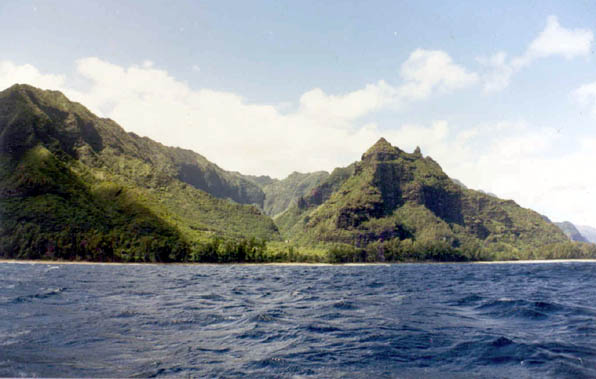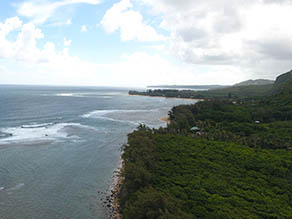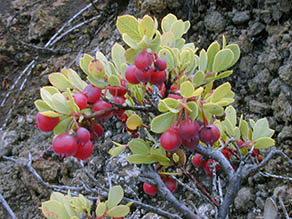| |||||||||||||||||||||||||||||||||||||||
 |
Come land your canoe at Hā‘ena!
|
 |
|||||||||||
 |
“Hā‘ena is a land richly inlaid with ancestral memories reaching beyond the borders of historic time and Western logic,” Carlos remarks. “Diverse traditions exist speaking of origins for those who are rooted deeply in Hā‘ena. Most anthropological, archaeological, and historical accounts of Hawai‘i assume the first aboriginal people came as voyagers. Hawaiian oral traditions contain many accounts of long-distance voyages from various islands and archipelagoes lying far to the south. “However, other stories suggest the Hawaiian people have always been in residence. Accounts gathered in the late 1800s and early 1900s from elders on Kaua‘i propose the earliest inhabitants of Hā‘ena might have been there long before voyagers from the south ventured into these northern seas. These people of great antiquity, known as Menehune, are recognized by some as the original people of these islands. "When the first people who came, they would have needed really safe anchorage. Not only in the sense that it was safe, but it had to be a place where they could sail into and sail out of, and not be blown up onto the land," says Carlos. "Because they had fairly good size canoes, which you wouldn't be able to paddle very well, so you had to come into a place where the direction of the wind allowed you to sail into the beach and off of the beach really quickly, in case the weather changed. "The bay here at Makua is like that, and fairly safe at least during the summer months. You have to find a place where the wind is flowing parallel to the beach, for those old canoes that cannot sail too well to windward. Now you can watch the windsurfers: they can tack right into the bay-in and out, in and out." Hā‘ena is one of the sites within the Hawaiian Islands where there is definite evidence of very early settlement. For archaeologists, evidence lies buried in the sand dunes near the shore. But for Native Hawaiians, the tradition of people living here goes very far back. Back, in fact, before the arrival of Hawaiians themselves. The earliness of settlement here is attributed to the favorable locational factors at Hā‘ena. Chipper explains, "We have radiocarbon dating that clearly shows people living here--at least, evidence of them existing here, as far back as 200-300 AD, solid 500 AD, and some sites right here at the mouth dated to two to three hundred.
"There were some flightless birds and such, but not a whole lot of terrestrial resources that could directly sustain them. Great abundance of water, but what was key was the marine resources for sustaining the people, until the plants that they brought with them in their voyaging canoes were able to flourish." "The plants they brought with them—there are roughly 25 to 30 species that are believed they brought with them in their voyaging canoes—were the core of their culture. They were their food plants, their fiber plants, their medicine plants, their ritual plants. So to me, initially, they would have looked for a place with abundant marine resources, abundant fresh water, abundant rainfall to water their plants that they had brought with them on their voyages. "And land that could be easily planted and sustain these initial plants. So to me, a place like Hā‘ena is perfect, because you have the reefs--the papa--the marine resources so abundant here, and easy to get to, close to water, close to a flat alluvial plane where you could plant your plants, abundant rainfall. Places like here, Bellows on O‘ahu is another place."
|
 |
|||||||

|
|
||||
| Copyright 2018 Pacific Worlds & Associates • Usage Policy • Webmaster |
||||












